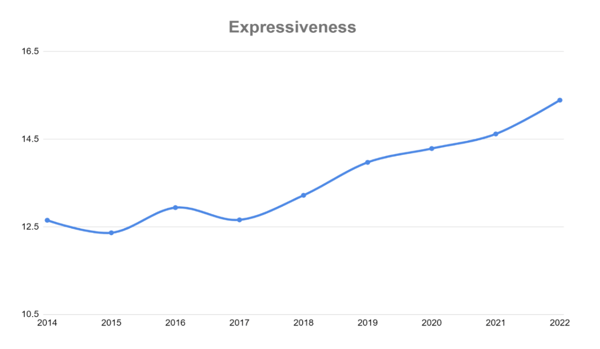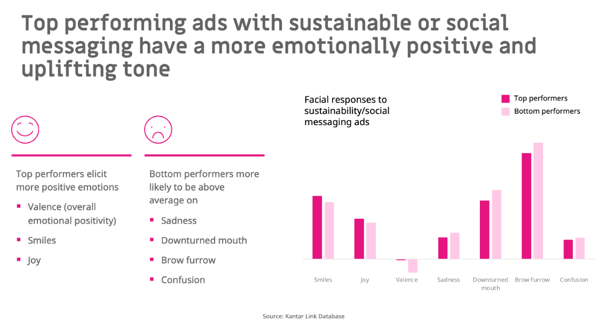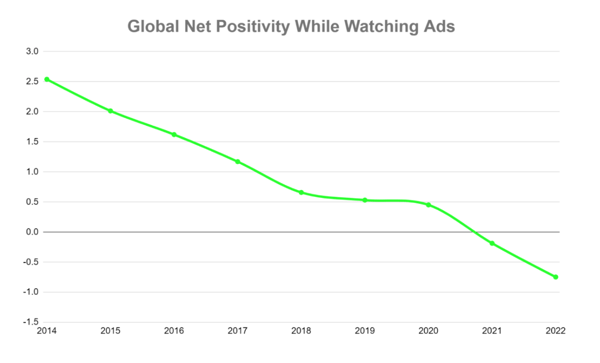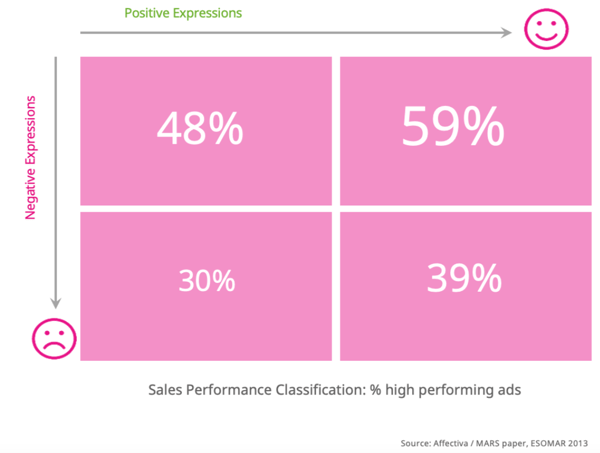
For over a decade, Affectiva’s Emotion AI has been used in advertising development. Through its automated facial expression analysis, our technology helps understand people’s unfiltered and unbiased reactions to content. Today, our solutions are used by 70 percent of the world’s largest advertisers, and 28 percent of the Fortune Global 500 companies.
At the Neuromarketing World Forum 2022, Graham Page, Global Managing Director of Affectiva Media Analytics, took the main stage to discuss the current seriousness of advertising, and why this approach may not always be effective in building powerful campaigns.
These are our top five insights from the presentation:
#1: Advertising has become more emotionally engaging – but emotional engagement is less positive
Using Emotion AI, Affectiva has analyzed the facial expressions of people watching ads aired over the last 8 years. The data offered longitudinal insights into the overall levels of audience engagement, but also the general nature – positive or negative – of the engagement (below in blue).
The results clearly showed how the more recent ads were generating more facial expressions from the people watching – implying that they engaged more with these ads.
 However, facial expressions typically associated with negative emotional states, like downturned mouths or brow furrows, have increased over time compared to expressions associated with positive emotional states (below, green). This indicates that while people are engaging with the ads, the content is eliciting more negative emotions in viewers than before.
However, facial expressions typically associated with negative emotional states, like downturned mouths or brow furrows, have increased over time compared to expressions associated with positive emotional states (below, green). This indicates that while people are engaging with the ads, the content is eliciting more negative emotions in viewers than before.
#2: Low net positivity is unlikely to be because people are more miserable
This decline in emotional net positivity could just be a sign that the turmoil in the world is affecting people’s moods in general, right? Actually, according to Affectiva’s data, it really is the advertising in itself that’s making people feel worse.
When watching the same ads during and outside the timeframe of a crisis, like the COVID-19 pandemic, people mostly responded the same way. This implies that it is unlikely to be the change in people’s mood that is affecting their emotional response to ads, but rather the ads themselves.
Interestingly, ads that have a more lighthearted or humorous tone do not seem to be less effective than before – even though there’s been a general decline in positivity in ads, this has in no way corresponded with a decline in the power of humor.
#3: Ads that focus on a problem without offering a solution are often rejected
When comparing people’s facial expressions to the measured success of the ad, it was clear that ads that generated fewer positive expressions, and more negative expressions, were less likely to be sales effective (below). Does this mean that sticking to an advertising strategy that aligns with the more difficult times could actually be harmful for brands?
In another analysis where we looked at 600 ads that referenced COVID-19 during the early parts of the pandemic, we saw that many of the less successful ads fell into the trap of dramatizing the problem, as opposed to providing a solution.
The ads that focused on the hardships of the pandemic generated more facial expressions associated with rejection – such as smirks, eyelid tightening and brow furrows. On the other hand, the ads that offered tangible help and had a positive outcome were particularly successful.
#4: Solutions, hope and positivity are key to engage with a wider audience
We see that facial expressions typically associated with more positive emotional states also tend to be associated with advertising success. But perhaps more importantly, ads that take a humorous approach or have a positive outcome can appeal to a wider audience.
This was especially clear in ads addressing sustainability or social messaging (below):
 A strong focus on the problem can emotionally resonate with people who are already engaged in, for example, sustainability issues. But for a wider audience to be brought along with them, a more lighthearted and positive approach that focused on solutions may be more successful.
A strong focus on the problem can emotionally resonate with people who are already engaged in, for example, sustainability issues. But for a wider audience to be brought along with them, a more lighthearted and positive approach that focused on solutions may be more successful.
#5: Empathetic stories using inclusive casting can appeal to everyone
The link between an emotionally positive tone and ad success can also be found in advertising that champions inclusivity and diversity.
While casting underrepresented groups in an ad didn’t automatically generate better results in terms of facial engagement – what made a big difference was the way those characters were portrayed (below).
Characters that were portrayed in a positive light helped people empathize with the story, dramatically boosting their engagement and the effectiveness of the advertising. This clearly shows that positive stories featuring underrepresented groups will appeal to everyone – rather than what in the past might have been thought of as a niche audience.
The Bottom Line
No matter the product or service being advertised, or the issue touched upon, we can see a common theme in the most successful ads. Emotion AI can help provide insights and recommendations on how to attune ad creative to resonate with consumers.
As the world learns to cope and prevail in these ever-changing times, what consumers need is a message that rings with optimism for the future. Authentic and inspirational stories are universally powerful and will resonate more with audiences than putting the emphasis on the negative, no matter how serious the subject. By giving the viewers the opportunity to embark on an emotional journey that provides closure and a positive tone, advertisers can make a big difference in widening the appeal of their content.








